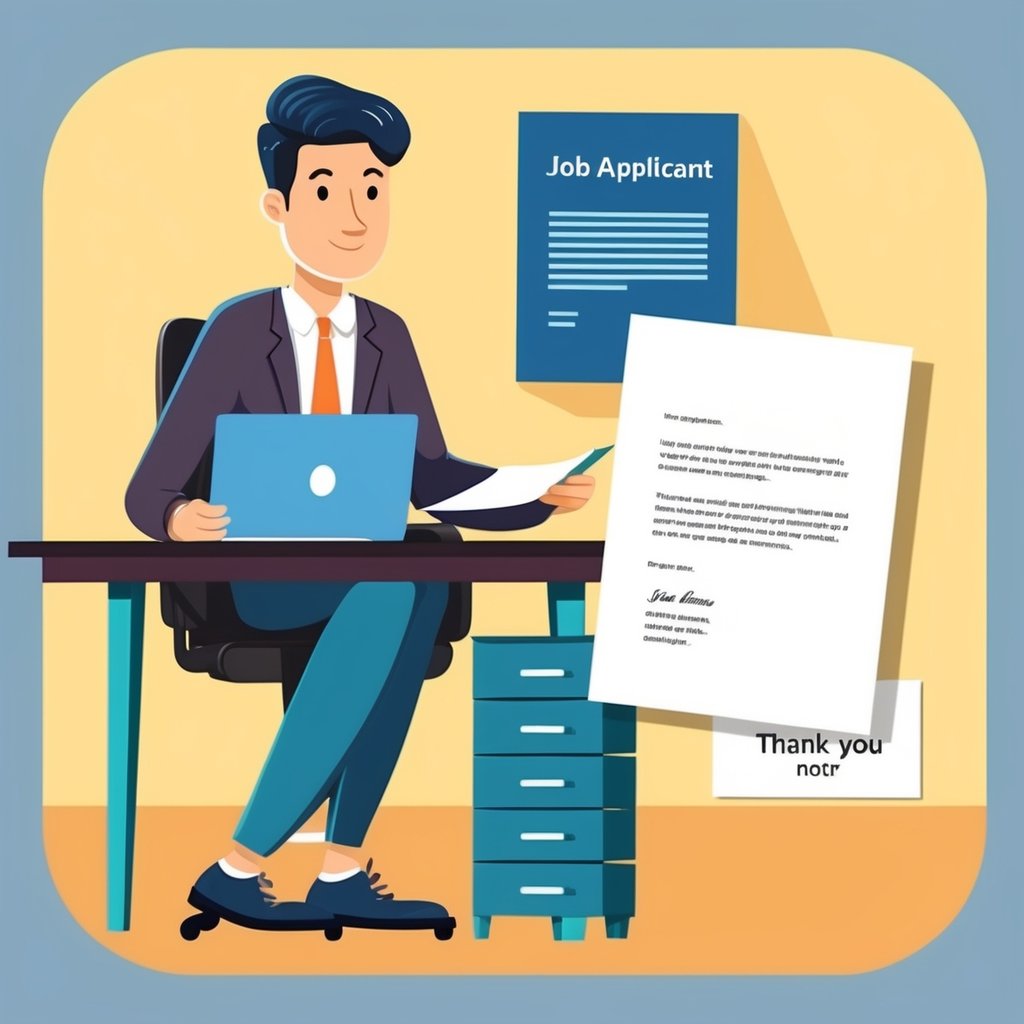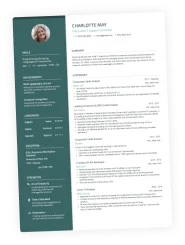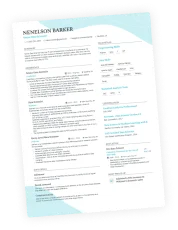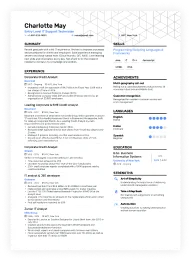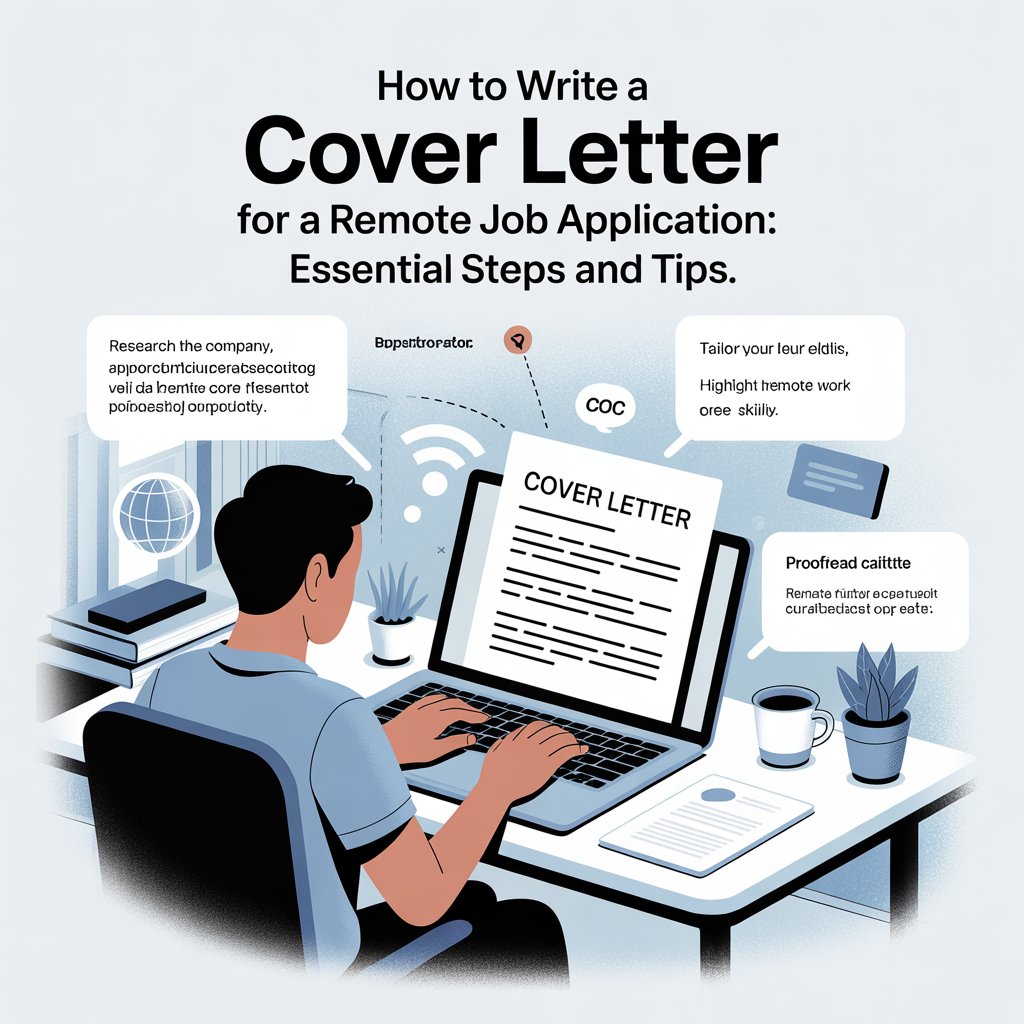Writing an effective cover letter for an internship is a crucial step toward getting the job you want. A good cover letter explains why you’re interested, highlights your relevant skills, and shows how you can actually help the company. If you can tell a bit of your story and connect your experience to what the employer needs, you’ll set yourself apart from the rest of the stack.

Let’s be honest, a lot of people feel stuck before they even start writing. Where do you begin? What’s supposed to go in there? If you know what the company is looking for, use a clear structure, and customize each letter for the job, you’ll stand out. For some real-world advice, check out JoinHandshake’s blog for internship cover letter tips.
And honestly, there are tools that can make it all a bit less painful. If you’re looking to save time or just want a little help making your cover letter better, you could Try RoboApply for free. It helps with resume scoring, cover letter writing, and applying for jobs across different platforms.
What Is a Cover Letter for an Internship?
A cover letter for an internship is basically a formal note you send along with your résumé when you’re applying for a specific position. It introduces you, highlights key qualifications, and gives you a chance to explain why you’d be a strong candidate.
Purpose of a Cover Letter
The main idea behind a cover letter is to give a little context that your résumé just can’t. It’s your opportunity to show why you want the internship and that you’re genuinely interested in the company. Employers actually look for signs that you’ve done your homework and really get what the position is about.
A good cover letter connects your skills, classes, and experiences to the internship itself. If you’re applying for a science internship, maybe you talk about your lab work in biology and how it ties into what they need. That’s what makes your application feel personal, not just copy-pasted.
It’s also a good place to talk about how your goals line up with the company’s mission. Handshake’s guide suggests mentioning academic achievements or projects that really mean something to you. And if you’re pressed for time, tools like RoboApply can help format your cover letter and make sure you’re using the right keywords.
Differences From a Résumé
A résumé is pretty much a list: education, skills, jobs—bullet points, short and sweet. But a cover letter is your chance to tell the story behind that list. You can explain why you’re applying and what makes you a good fit for the internship.
Résumés are all about the facts. Cover letters add some personality. Maybe you want to explain a gap in your work history or talk about volunteer work that doesn’t really fit on a résumé. This is where you do it.
Employers often read the cover letter first just to see how you write and whether you pay attention to details. If you want step-by-step help or want to see how your résumé stacks up, you can Try RoboApply for free.
Understanding Internship Requirements
A lot of job seekers skip over what employers are actually looking for when they write their cover letters. But knowing the company, the position, and the main qualifications really helps you stand out.
Researching the Employer and Organization
Start by digging up some details about the company. Check out their website, read their mission statement, look at their values, and maybe even browse their latest news. This stuff helps you tailor your cover letter to what they care about.
Take note of their industry, recent projects, and what they seem to focus on. Scroll through their social media to get a feel for their vibe and how they interact with the world. Use what you find to show genuine interest and that you’d actually fit in.
Sites like Glassdoor or Indeed can give you a peek at what it’s like to work there, too. Sometimes you’ll spot patterns in what qualities they value in employees.
Analyzing the Job Description
The job description is basically a cheat sheet for what they want in an intern. Break it down—look at the responsibilities, requirements, and skills they mention. Jot down keywords and the stuff they keep repeating, like teamwork, project management, or maybe some technical know-how.
Match your experiences to these needs. If they want “strong communication skills,” think about a time you led a project or gave a presentation. Call out specific points from the posting so they know you’re not just guessing.
If they ask for technical skills or software knowledge, mention those directly. It shows you’re paying attention and you know what you’re getting into.
Identifying Essential Qualifications
Every employer has a short list of must-haves for any position. Figure out what keeps coming up in the posting—those are the essentials.
A quick table can help you keep track:
| Essential Qualification | Your Experience |
|---|---|
| Excel proficiency | Used Excel for class projects |
| Leadership | Led student club for one year |
| Teamwork | Participated in group research |
Mention these matches right in your cover letter. If you’re missing something, talk about how you learn quickly or adapt. Tools like Try RoboApply for free can compare your résumé to the job and show you where you fit—and where you might need to fill in the blanks.
Essential Components of an Internship Cover Letter
A strong internship cover letter has a few main parts. Each one works together to introduce you, show your interest, and highlight why you’d be a great addition.
Contact Information
Start with your contact info at the top—make it easy to read and double-check everything. Your name, address, phone, and a professional email (no jokes, please). Add the date, then the employer’s name, their title, company, and address.
For example:
Jane Smith
123 Blue Avenue
Springfield, IL 62704
(555) 123-4567
jane.smith@email.com
May 6, 2025
Hiring Manager
ABC Company
456 Green Street
Springfield, IL 62701
Keep this part clean and simple. Typos here are a bad look. If you have a LinkedIn profile, it doesn’t hurt to include that, too.
Salutation
Greet the person reading your letter. If you can find the hiring manager’s name, use it: “Dear Ms. Johnson,” or “Dear Mr. Lee.” If you can’t find a name, “Dear Hiring Manager,” is fine. Skip “To Whom It May Concern”—it feels a little cold.
Always spell names right. If you’re not sure about gender, just use the full name: “Dear Taylor Morgan,” works and feels respectful.
Opening Paragraph
The opening paragraph should say which internship you’re applying for and why you’re interested. Mention where you found the job if you want. For example: “I’m writing to apply for the Marketing Intern position at ABC Company, which I spotted on your website.”
You can throw in a quick line about a skill or experience that makes you a good fit. Maybe: “As a sophomore majoring in Business at State University, I’ve built up communication and teamwork skills through group projects.”
You don’t need a novel here—just grab their attention and set a good tone.
Body Paragraphs
This is where you get into the details. Use one or two paragraphs to explain why you’re a good fit. Share specific examples—school projects, volunteer work, jobs—whatever relates to what they’re looking for.
For instance, if you want a finance internship:
“During my Accounting 101 class, I worked in a team to analyze and present a company’s financial health. That project sharpened my data analysis and presentation skills, which I’d love to bring to your finance team.”
Tie your examples back to the job description. Mention coursework, activities, or awards that show off your strengths.
If you want to save some time, tools like RoboApply can help you customize your letter for each job. Try RoboApply for free to build, score, and tweak your cover letters for different applications.
How to Highlight Skills and Experiences
Employers want to see specific examples that prove you’ve got the right skills. Writing with a bit of detail helps the reader picture you in the role.
Showcasing Relevant Skills
Start by scanning the job description for the key skills they want. Maybe it’s:
- Communication
- Teamwork
- Problem-solving
- Technical skills like Excel, coding, or research tools
In your cover letter, give quick stories that show when you used these skills. For example:
“During my group project in biology class, I led weekly meetings and kept everyone on track.”
Use action words like “organized,” “developed,” “collaborated,” or “analyzed.” It makes your examples pop and feels more real.
Demonstrating Work History and Education
You don’t need years of experience to show you’re ready. Pull from part-time jobs, school projects, volunteering, or clubs.
Here’s how you might write about it:
“Last year, I worked as a cashier at a local store. I answered customer questions, worked with my team to solve problems, and learned to stay calm during busy shifts.”
Share your education, too, if it’s relevant:
“I’m a third-year business major and have taken courses in marketing, management, and accounting.”
People want to see not just where you’ve been, but what you learned and what you accomplished along the way.
Connecting Skills to Job Requirements
The real difference in an internship application? It’s when you actually connect your skills to what the company’s looking for. Seriously, don’t just list everything you can do—pick two or three standout abilities and show how they fit right in with what the role needs.
Here’s how you might lay it out:
| Skill | Job Requirement | How It Connects |
|---|---|---|
| Data Analysis | Prepare reports | “I used Excel to analyze survey data for a club, making charts to show trends.” |
| Team Leadership | Lead group project | “I led my debate team, assigning tasks and ensuring we stayed on track.” |
It’s smart to grab keywords straight from the job posting and tie them to your own stories. That way, you’re basically telling the employer, “Hey, I get what you need—and I’ve done it.”
Applying online can be a grind. If you’re over it, give RoboApply a shot—it’s free, and it’ll help you score your resume, crank out better cover letters, and apply faster on sites like LinkedIn or Indeed.
Try RoboApply for free.
Writing Tips and Best Practices
A cover letter that actually works for an internship? It’s not just about sounding “professional.” You want your message to be clear, your writing tailored to the job, and your tone to match the company’s vibe. The best ones feel personal and confident—not stiff or copy-pasted.
Effective Communication Skills
Keep it straightforward. Employers don’t want to read a wall of jargon or super-complicated sentences. If you can say something simply, do it. It’s not just about showing off your vocabulary—it’s about proving you can get your point across clearly and confidently.
Breaking things up with short paragraphs or bullet points isn’t just easier to read—it also helps you focus on what matters:
- Share why you’re interested in the internship (and be honest!).
- Highlight your best skills, with real examples (think: teamwork, data analysis).
- Mention a project or achievement that proves you can do the job.
Active voice? Always better. “I developed strong research skills at school” just sounds more alive than “My knowledge was expanded at school,” right?
Personalizing Your Cover Letter
If you’re sending the same letter to every company, you’re probably wasting your time. Start by finding out who to address—skip “To Whom It May Concern” if you can track down a name.
Dig into the posting for details. If they mention teamwork, talk about a time you actually worked well with others (group projects, volunteering, whatever fits). Show you’ve done your homework and you’re not just firing off generic applications.
Tools like RoboApply can help you pick out the right keywords and keep things organized. Try RoboApply for free.
Aligning Personality With Company Culture
Here’s the thing: companies care about who you are, not just what you know. If you can, slip in a line about why you vibe with their mission or work style.
Let’s say they’re all about creativity and innovation. You could write, “I thrive when generating new ideas, which matches your team’s focus on creative problem solving.” It’s a tiny thing, but it helps them picture you on their team.
Want to get a sense of their culture? Creep their website, check out their social media, or read employee stories. Then, add a personal touch or draw a connection to your own approach—makes your letter stick.
If you want help with personalizing or matching your materials to different roles, Try RoboApply for free.
Formatting and Proofreading
A cover letter that looks polished and reads smoothly just screams “I care.” The structure, the details, the lack of typos—it all adds up and tells the employer you’re serious.
Formatting Guidelines
Don’t overthink it: keep your cover letter clean and easy to scan. Go with a standard font (Arial, Times New Roman, whatever’s not distracting), 10–12 point size. Margins? One inch all around. Single space your paragraphs, and toss in a blank line between them.
Stick to the classic business letter format:
- Your contact info at the top
- Date
- Employer’s contact details
- A greeting (ideally with a name)
- Three short paragraphs: intro, body, closing
Keep it to one page. Left-align your text, skip the fancy colors or graphics, and save it as a PDF unless they ask for something else. Templates can help, but don’t let your letter look like everyone else’s—make it your own. If you want to save time, Try RoboApply for free.
Grammar and Clarity
Good grammar isn’t just about rules—it’s about not distracting the reader. Read your letter out loud (seriously, it works) to catch typos, weird phrasing, or tense mistakes. Stick to active voice and keep your sentences short and snappy.
- Good: “I am excited to apply for the Finance Intern position at ABC Company.”
- Not-so-good: “It is with great enthusiasm that I am writing to you regarding the finance role that you are currently offering.” (That’s a mouthful.)
Break up long sentences. Drop the jargon. Make sure your facts are right—company names, dates, titles. If you can, have someone else take a look, or at least run it through a grammar checker. But don’t trust the tool completely—give it one last read yourself.
Proofread Before Submission
Proofreading is the last step, but honestly, it’s huge. Mess up a name or leave in a typo and you might not get a second chance. Read your letter aloud, print it out, or change the font—sometimes that helps you spot mistakes you’d miss otherwise.
Double-check the job posting for any weird requirements. Attach the right docs, name your files clearly (like JohnDoe_CoverLetter.pdf), and make sure you’ve actually followed all the instructions.
If you’re juggling a bunch of applications, RoboApply can help keep your letters tidy and error-free. Try RoboApply for free.
Closing and Next Steps
The way you end your cover letter? It matters more than you’d think. Wrap things up with gratitude, a final nudge about your interest, and a little professionalism—just enough to stick in their mind.
Crafting a Strong Closing Paragraph
The closing paragraph is your shot to remind them why you’re a good fit. Thank them for their time, and maybe sneak in a key skill that matches the job.
Here’s a sample:
“Thank you for considering my application. My coursework in data analysis and my experience with large group projects have prepared me to succeed in this internship. I am excited to contribute my skills and learn more about your team’s work.”
Aim for two or three sentences—short, positive, and not just repeating what you already said. Leave them with a strong, professional impression. Want more ideas? Check out these cover letter closing tips.
Expressing Interest in an Interview
After you close, don’t be vague about next steps. Say you’d like to interview—show you’re eager. Skip the “I hope to hear from you soon” and be a bit more specific.
Try something like:
“I would appreciate the opportunity to discuss my experience in more detail and learn how I can support your team as an intern. I am available for an interview at your convenience and can provide additional materials if needed.”
This shows you’re confident and ready to move forward. Also, make sure your contact info is easy to find so they can actually get in touch.
Including a Professional Handshake
You can’t shake hands in an email, but your sign-off is the next best thing. Go with a classic closing:
- Sincerely,
- Best regards,
- Respectfully,
Then type your full name. If you’ve got a LinkedIn or a portfolio, drop the link underneath.
Example:
Sincerely,
Taylor Brooks
linkedin.com/in/taylorbrooks
A clear, professional sign-off shows you pay attention to details. Double-check everything before you hit send. RoboApply can also scan your letters for improvements if you want a little backup. Try RoboApply for free to make the whole process less painful.
Additional Resources and Support
Most people get a lot out of using career services, reading real expert advice, and leaning on their network to build strong cover letters and boost their job search. The right tools and resources can make the process way less overwhelming.
Utilizing Career Services
If you’re in school (or even just near a community center), check out career services. They’ll help you one-on-one, review your resume, and give you feedback on your cover letter. Some even run workshops or mock interviews, which—let’s be honest—most of us could use.
Plenty of career centers have sample cover letters, templates, and job listings. You might find resume clinics or Q&A sessions with actual recruiters.
Career advisors can help you tweak your cover letter for specific internships, suggest better phrasing, or point out formatting issues. They usually know what local employers want, which is a real advantage.
For students and recent grads, these services are often free and super accessible. Taking the time to use them can make your application stand out and set you up for success later on.
Learning From Reputable Sources
Don’t just trust random internet advice. Look for guides and articles from university career sites, legit job boards, or professional blogs. They’ll give you solid tips on what to say, what to skip, and how to avoid common mistakes.
Some sites even offer full cover letter examples or easy-to-use templates. Handshake’s guide is pretty practical, and university sites like UCF’s have collections of sample cover letters from real applicants.
You can also use tools like RoboApply to help with resume scoring, writing cover letters, and applying faster. Try RoboApply for free and see if it makes the grind a little smoother.
Networking Tips for Internship Success
Networking isn’t just for full-time jobs. Reaching out to alumni, family friends, or professors can give you the inside scoop on what companies want.
Start small: go to career fairs, local events, or hop into online meetups in your field. Build out your LinkedIn with a clear summary and a decent photo. When you reach out to someone, keep it short and polite. Here’s a message you could try:
Hi [Name],
I’m a student interested in [Field/Industry] and noticed your experience at [Company]. Would you be willing to share any advice on applying for internships in your field? Thank you for your time.
Stay active—comment on posts, ask questions, share your progress. Sometimes, just introducing yourself leads to a referral or even a new opportunity. You never know unless you try.
How Cover Letters Enhance Your Job Search
A cover letter is your shot to introduce yourself in a way that a resume just can’t manage. It’s where you can show a bit of personality, explain your motivation, and, honestly, let them know why you’re genuinely interested in that particular position. It’s tempting to recycle the same letter for every internship, but writing a fresh one each time is worth it—trust me, it shows.
If you want to see what a solid cover letter looks like, check out the North Central College guide. They break down how to actually match your skills to what a company wants. Usually, you’ll start with a quick intro, then a paragraph or two tying your experience to the job, and end with a little nudge for an interview.
Honestly, writing cover letters can be a drag. Tools like RoboApply can help, though—they’ll give you feedback and keywords to help tailor your letter for different jobs. If you’re feeling stuck or just want to save some time, you can give RoboApply a shot for free.
Frequently Asked Questions
Cover letters for internships really shine when they’re specific, to-the-point, and clearly aimed at one particular company or role. Don’t overthink the formatting; just keep it simple. A strong intro and a few real examples can make a big difference in a crowded field.
What should be included in a cover letter for an internship if you have no experience?
No experience yet? That’s okay—focus on what you do have: your education, any transferable skills, and why you want the role. Mention your major, classes that relate, school projects, or even volunteer work. Show you’re eager to learn and highlight soft skills like teamwork or communication.
For example:
I’m a sophomore majoring in Marketing and recently worked on a group project about social media campaigns. While I haven’t had a formal internship yet, I’m excited to bring my research and collaboration skills to your team and help you hit your goals.
How can a student effectively introduce themselves in an internship application letter?
Start with your name, what you’re studying, and the specific internship you’re after. If you found the internship somewhere specific or there’s a reason you picked that company, toss that in too. No need to get fancy—just be yourself.
For instance:
My name is Maya Torres, and I’m a junior studying Environmental Science at Jackson University. I’m applying for the Summer Sustainability Internship I saw on your careers page because I’m genuinely interested in your work with renewable energy.
What are the key elements to highlight in a cover letter when explaining internship experience?
Talk about what you did, where you did it, and what you learned. If you can, share numbers or specific outcomes. Try to connect your past experience to what the new internship is asking for.
For example:
During my internship at GreenTech, I worked on data analysis for a recycling pilot program and helped boost efficiency by 10%. That experience really set me up to jump into your current projects and make a difference.
Where can I find a free template for an internship cover letter?
A good template can really help you get started. If you’re looking for one, Handshake has a pretty useful guide and template on how to write an internship cover letter. Just make sure to tweak it so it actually sounds like you.
Can you provide a sample of a brief yet impactful cover letter for an internship?
Sure thing—here’s a quick example for a marketing internship:
Dear Hiring Manager,
I’m writing to apply for the Marketing Intern position at Horizon Media. As a business major at Central College, I’ve picked up strong research and communication skills through my classes and a recent project on digital marketing trends. I’d love to bring some fresh ideas and support your team this summer. Thanks for considering my application.
Sincerely,
Jordan Kim
It’s short, to the point, and actually connects the candidate’s background to the internship.
What format should be used for an internship application letter submitted in Word or PDF?
Stick with a straightforward font—something like Arial or Times New Roman usually works best, and 11 or 12 point size is just right. Margins? One inch all around keeps things tidy. Go with single spacing, but definitely leave a blank line between paragraphs so it doesn’t look crammed together. When it comes to saving, either .docx (Word) or .pdf is fine unless the employer specifically asks for something else.
Honestly, both of those formats get along well with most applicant tracking systems. Oh, and don’t forget to include your full name in the file name—something like Jordan-Kim-Marketing-Intern-Cover-Letter.pdf makes it easy for folks to find your application.
If you’re feeling stuck or just want to double-check your formatting, you might want to give RoboApply a try. It’s free, and it’ll help you whip your cover letter into shape before you send it off.
